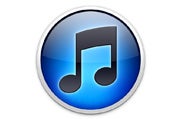
Apple’s iPod, which transformed the way music is sold and distributed and revolutionized the consumer electronics industry, turned 10 on today.
Known largely for its computers until then, Apple introduced the first iPod on October 23, 2001, moving the company into a new era in which it would develop ever sleeker handheld devices, including the iPhone and the iPad.
After releasing Windows versions of both the iPod in 2002 and the iTunes online store in 2003, the floodgates were opened for Apple’s consumer success. As Macworldpoints out, it was at that point that Apple became more than a niche computer maker with a cool little device. It was propelled into an iconic brand that became known across the globe for making the best music player on the market.
“From Apple’s revenues to design influence to the fundamental business and distribution models that glue the industry together, the iPod started it all,†writes CultofMac’s Mike Elgan.
The iPod also changed the music industry.
Remember when you’d have to buy an entire album for more than $10 just to get one song? The iTunes store changed all that when it let people buy and download to their iPods individual songs for less than $1. Today the amount of content Apple sells there in addition to music — movies, TV shows, apps, books and more — is a massive asset for the company and one that propels people to continue buying its devices in droves.
The industry quickly followed suit.
Amazon now also has a wealth of online content in addition to the books the company started with and is increasingly using devices to get people buying it. Note the Kindle Fire, for example. It also doesn’t come as a surprise that Google may be opening a music store to compete with Amazon and Apple.
And ever since people began walking around with Apple’s white earbuds in place, the entire consumer electronics industry has reacted. Countless accessories have been made for the iPod line, including some really wacky ones.
Originally, the now ubiquitous entertainment device was a 5GB music player that only worked with the Mac operating system and used a FireWire connection instead of a USB cable to update songs and charge the battery. After many iterations, today the iPod line includes the iPod Classic, the touchscreen iPod touch, the iPod Nano and the tiny iPod Shuffle.Millions of them have been sold worldwide.
[pcmag]












